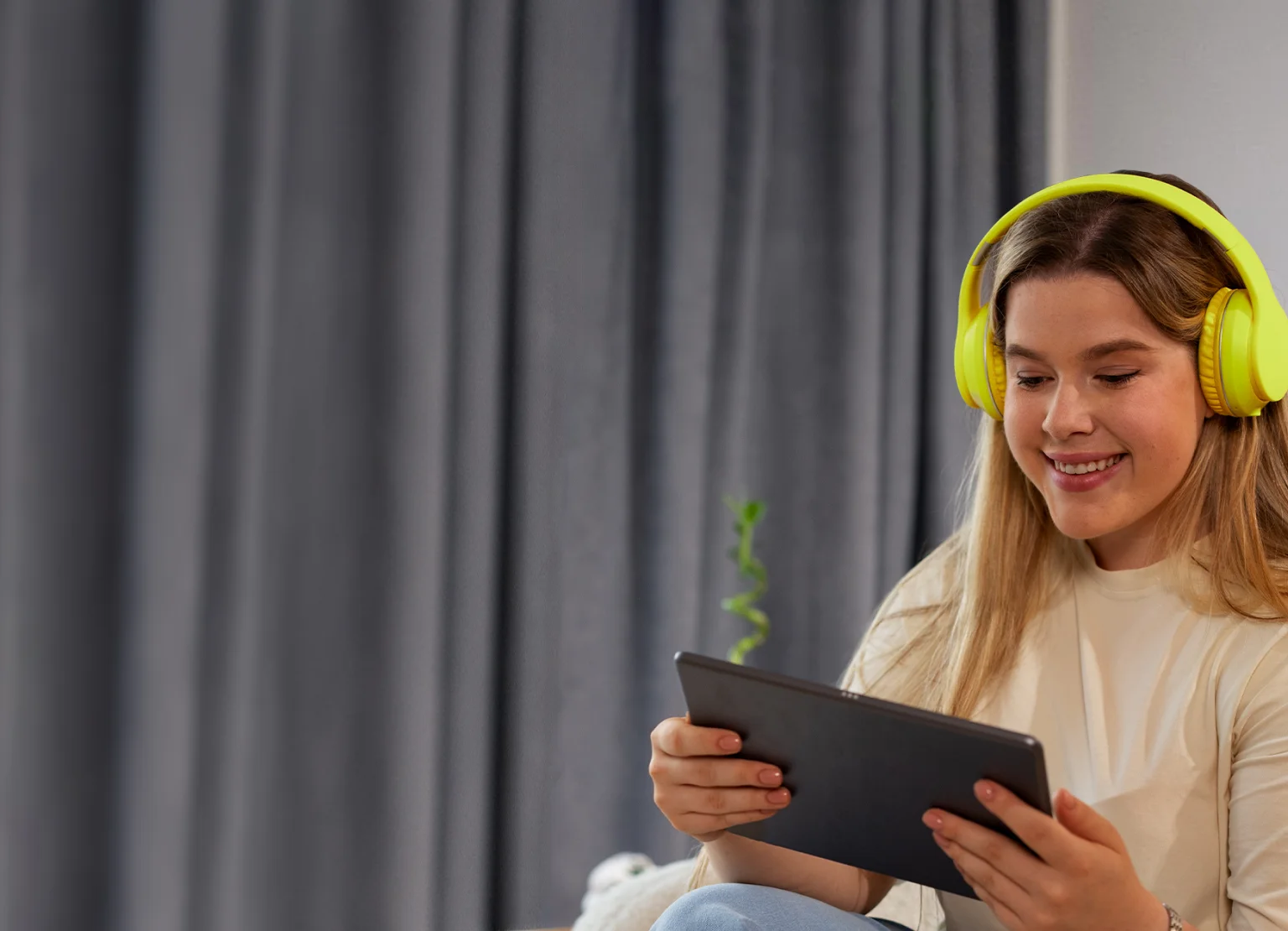Why Every Celebrity Has a Beauty Brand (And What Marketers Should Actually Pay Attention To)

At this point, if you're a celebrity and don't have a beauty brand... are you even famous?
From billion-dollar blushes to waitlist-only lip treatments, it feels like every A-lister is throwing their name (and face) on a beauty line. And honestly? It's working. In some cases, these side hustles are outperforming their actual careers.
But beyond the glam, this isn't just a celebrity trend. It's a marketing playbook, and if you squint past the pastel packaging and soft-focus product shots, you'll find lessons every marketer should be stealing.
The Beauty Boom: Why It Actually Matters
Let's start with this: celebrity beauty brands aren't just vanity projects anymore, they're legitimate money machines.
According to NielsenIQ, celebrity-founded beauty brands surpassed $1 billion in sales as of late 2023. That's a 57.8% jump year-over-year, and it's outpacing the entire beauty industry's growth of 11.1% during the same time. Translation? This isn't a phase. It's a takeover.
And the launches keep coming: new names, new lines, new campaigns, and fans keep lining up to buy. It's not just a rush of influencer-fueled capitalism. It's a shift in how brands are built, sold, and scaled in 2025.
Selena Gomez's Rare Beauty is now worth over $2 billion. Rihanna's Fenty Beauty? Estimated at $2.8 billion, contributing significantly to her billionaire status. And Hailey Bieber's Rhode, despite launching just in 2022, has already achieved over $100M in revenue.
{{cta-component}}
Why People Keep Buying (Even When They Know It's Celebrity-Backed)
Yes, the famous face helps. But it's not just about the star power.
The truth? These brands are slaying their marketing game:
- They sell identity, not just product – Buying Rare Beauty doesn't mean you're wearing blush. It means you're emotionally aligned with Selena Gomez, whose brand is rooted in mental health advocacy.
- They get the aesthetic right – Minimalist packaging. Dewy skin. Pastel tones. It's giving luxury and approachability.
- They stand for something – Mental health. Clean ingredients. Inclusivity. Rare Beauty donates 1% of sales to its Rare Impact Fund. Rhode promotes skin barrier health with a less-is-more ethos.
- They know the algorithm – They live on TikTok and IG. Launches feel like viral moments, not corporate announcements. Rare's Soft Pinch blush has gone viral multiple times: because of users, not ads.
Hailey Bieber's Rhode generated a 440,000-person waitlist during its initial launch by leaning into TikTok content that teased her "glazed donut skin" and reposting UGC from early fans.
What Marketers Can Actually Learn From Them
Celebrity beauty brands are basically creator-led DTC startups, but prettier.
Here's what's worth stealing:
- Turn your founder into your story – Even if they're not famous, people connect with people. Put a face on your brand.
- Make your products feel sensory – Think textures, vibes, feelings. Hailey Bieber's Rhode is the perfect example. Styling her skincare with donuts, smoothies, and soft lighting.
- Know your visual language – From fonts to filters, the best brands have a look, and they never deviate from it.
- Lead with values – Rare Beauty puts mental health at the core of their brand. Not in a preachy way, but in a way that builds trust.
- Use UGC as social proof – Content from real people is 50% more trusted than brand content. And it drives conversion. Rhode reposts and features UGC constantly, especially in product launches.
Personal Brands + UGC = The Celebrity Blueprint You Should Be Stealing
Celebrity beauty brands are winning because they're built like modern creator brands:
- A strong personal identity (the celeb)
- A product that matches that identity (the brand)
- A community that amplifies it (fans + UGC)
Take Rhode. Hailey isn't just promoting products—she's reposting fan content, responding to comments, and letting her community co-create the brand. TikTok is filled with GRWM videos featuring Rhode's peptide lip treatments, and Rhode reposts them constantly.
The result? It feels like a friend's skincare routine, not an ad campaign.
The vibe: Less "brand talking at you," more "bestie sharing her faves."
%20(2)%20(1).webp)
Marketing takeaway:
- Humanize your brand: founders, team, anyone
- Make UGC a core part of your strategy, not an afterthought
- Build a community that feels like it's "in" on the brand, not just buying from it
Bonus? UGC-powered launches get people hyped. Rare Beauty's Soft Pinch blush alone sold $70 million worth in its first year, becoming Sephora's #1 blush with one sold every 3 seconds.
When It Flops (Because Not All Celebrity Brands Hit)
Let's be real, not every celeb beauty brand is a Fenty.
Here's when it doesn't work:
- It feels like a cash grab – No story, no soul, just a logo and some lip gloss
- The celeb doesn't match the vibe – If the personal brand feels off, the product won't feel right either
- There's no reason to care – Weak mission, no unique angle, forgettable visuals = forgettable brand
- It tries too hard to be Gen Z – Please. Stop using slang you don't understand
A good example? When Addison Rae's brand Item Beauty was pulled from Sephora due to lack of demand, proof that TikTok fame alone isn't enough without strategy, cohesion, or consumer trust. According to Business Insider, the brand suffered from low differentiation and inconsistent promotion. Rae stopped posting about the brand just months after its launch.
{{form-component}}
Kim Kardashian's SKKN received early criticism for its high price point and lack of differentiation. Despite Kim's mega-influence, reviews noted it lacked innovation and relied too heavily on aesthetic over function.
Not every celebrity should have a beauty brand. But the ones who do it right? They're redefining what brand loyalty looks like.
Celebrity beauty brands aren't just selling dewy skin, they're selling story, lifestyle, and belonging.
You don't need a stadium tour or 200 million followers to do the same. You just need a clear identity, a strong aesthetic, and a strategy that puts real connection first.
Because in 2025, the most successful brands aren't the loudest. They're the ones that feel the most human.












Heading 1
Heading 2
Heading 3
Heading 4
Heading 5
Heading 6
Lorem ipsum dolor sit amet, consectetur adipiscing elit, sed do eiusmod tempor incididunt ut labore et dolore magna aliqua. Ut enim ad minim veniam, quis nostrud exercitation ullamco laboris nisi ut aliquip ex ea commodo consequat. Duis aute irure dolor in reprehenderit in voluptate velit esse cillum dolore eu fugiat nulla pariatur.
Block quote
Ordered list

- Item 1
- Item 2
- Item 3
Unordered list
- Item A
- Item B
- Item C
Bold text
Emphasis
Superscript
Subscript





%20(1).webp)
%20(1)%20(1).webp)
%20(1).webp)